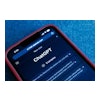The body of Carlnell Walker Jr. was found stuffed in the trunk of his car in July by Clayton County, Ga., police. The 23-year-old was identified as a junior business major at Morehouse College. Three weeks later, the police announced that at least four other current or former Morehouse students had been arrested and charged in the brutal killing. A fourth suspect, who has been previously involved in criminal activity, was captured in Illinois.
The news could not have come at a worse time. Morehouse was reveling in the international publicity it was receiving as a result of being named custodian of the Martin Luther King Jr. papers, formerly stored in the home of the late Coretta Scott King. The group of Atlanta political and business leaders who underwrote the $32 million loan to purchase the papers from the King estate chose Morehouse because it was King’s alma mater and because of its reputation as one of the most highly regarded institutions of higher education in the United States.
The image of this historically Black male college has rested for more than a century on the classical “Morehouse man,” who was not only intelligent and articulate but poised and polished in the social graces. He exhibited moral character and espoused the basic values inherent in the Judeo-Christian tradition.
The college, keenly aware of the “the Morehouse mystique,” deliberately promotes that image. However, in recent years that image has been tarnished a bit.
Homophobia has resulted in at least one highly publicized violent incident. In 2004, one student severely beat another with a baseball bat for an alleged homosexual glance. And although Morehouse security forces continue to suggest that incidents of campus violence are few, there have been consistent reports about fights among students, robberies, burglaries, drug distribution and drug abuse. Within the last decade, at least three students have been murdered — all off campus.
Following reports of the most recent murder, many Morehouse alumni, as well as others, have raised questions about the contemporary climate, environment and culture at the college, particularly as it concerns student behavior. These questions have taken on new parameters since the alleged rape of a young Black exotic dancer by three members of Duke University’s men’s lacrosse team. The Duke case is just another example that there are anti-social forces at work on many of the nation’s college campuses.
Morehouse College is not immune from such forces. Until fairly recently, the college, both inside and outside of the classroom, consciously tried to provide an atmosphere that promoted the best of what it deemed the spiritual and personal values that made for good citizenship and “the beloved community.” A hallmark of this effort was the daily chapel services that all students were required to attend. In recent times, however, the college’s student population has grown too large to have all students attend even a weekly assembly. And the assemblages, which are required and carry the lofty name of “Crown Forum,” are opposed by some students. Some have even expressed their discontent through disruptive behavior during the assemblies.
In the present environment, the Morehouse administration and the faculty are faced with several apparent countervailing forces. The Morehouse mission, its goals and objectives, and its student regulations remain traditional for the most part. The school is dedicated to producing leaders who are taught about their Black heritage, and who show a special responsibility to the disadvantaged all over the world. While dedicated to attracting the best qualified students, as measured by grades and test scores, the college continues to admit students who may fall below its high standards but who show promise.
These “diamonds in the rough” have often graduated with some of the college’s highest honors and have gone on to important leadership positions in the United States and abroad. Among these rough diamonds, as well as among more highly qualified students, there may appear a student from “the streets” of urban America or even an ex-convict. In fact, the recently murdered Morehouse student had been incarcerated as a juvenile offender.
A diverse student body will inherently reflect the complex problems present in the larger society. But the impact of anti-social behavior is compounded when otherwise well-mannered students engage in uncivilized behavior. With these challenges, Morehouse, like other colleges, has to make difficult choices between allowing individual freedom of expression or instilling and enforcing a code of conduct that will adhere more to its mission, goals and objectives.
— Dr. Alton Hornsby Jr., a 1961 graduate of Morehouse College, is the Fuller E. Callaway Professor of History at the college.
|
Reader comments on this story: |
|
There are currently no reader comments on this story. |
© Copyright 2005 by DiverseEducation.com


















